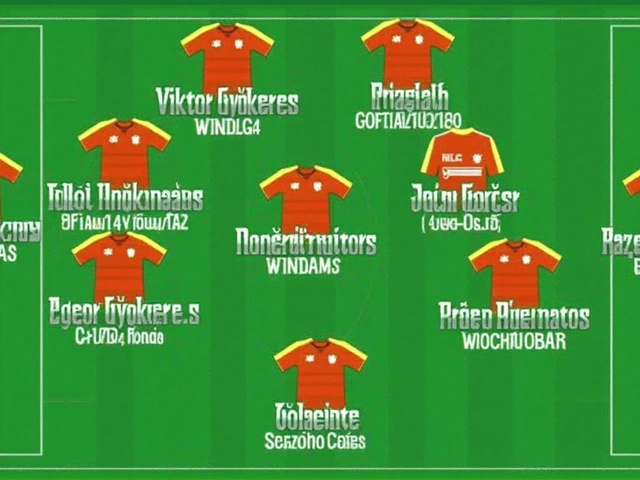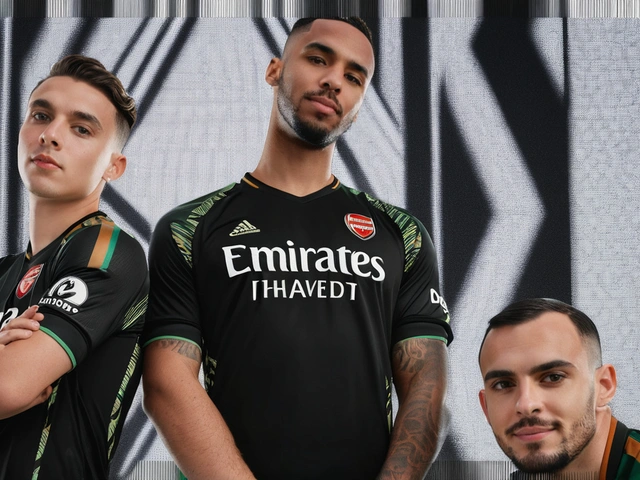Watkins strikes against former club
A roar, a goal, and then a whistle that sucked the air out of the Brentford Community Stadium. Aston Villa left with a 1-0 win, Brentford left with a sense of injustice, and the Premier League had another refereeing flashpoint to chew on.
The story started with a familiar face doing damage. Ollie Watkins, once Brentford’s star forward and now Aston Villa’s leading man, decided this game in the 49th minute. He peeled off his marker, took the chance cleanly, and buried the finish with the certainty of a striker who has grown into the job. The away end erupted. For home fans, it was a gut punch: the player they cheered not long ago had just turned the game.
The first half had been edgy and careful, with both teams probing more than creating. Brentford tried to set the tempo with their usual mix of direct running and quick switches. Villa, under Unai Emery, were compact and patient, waiting for a moment to break the rhythm. That moment came right after the interval. Watkins saw the gap before anyone else, timed his movement, and made it count.
For Watkins, this fixture is always loaded. He made his name in West London, then moved up a level and became a full-blooded Premier League striker at Villa Park. He’s sharper now, more ruthless in the box, and better at the little things that make goals happen: the blind-side run, the extra half-second of calm, the first touch that sets up the second. He showed all of that in one move.
Brentford didn’t fold. They raised the intensity, pushed their full-backs on, and fed their wide forwards early to test Villa’s back line. Bryan Mbeumo and Yoane Wissa kept asking for the ball, Kevin Schade stretched the pitch, and Mikkel Damsgaard drifted into the half-spaces looking for a strike. The plan was clear: pin Villa back, crash the box, force errors.
The hosts almost got what they came for. The key spell came midway through the second half, when a flurry of Brentford pressure had Villa creaking. Crosses flashed across Emiliano Martinez’s six-yard box, second balls dropped in dangerous areas, and one thunderous Damsgaard hit smashed the underside of the bar and, to many eyes in the ground, looked over the line. Brentford celebrated. The stadium did too. Then the referee whistled for a foul on Martinez.
That changed everything. Instead of 1-1, it was a Villa free kick and a long, agitated wait while the review took place. When the check ended and the original call stood, frustration spilled over in the stands and on the touchline. Brentford players kept asking the same question: how much contact is too much contact when a goalkeeper comes to claim?
The moment VAR stole the spotlight
This was the incident that decided the night. Damsgaard’s shot rattled the metalwork and bounced down near the line, but the argument wasn’t about whether the ball crossed. The referee had already given a foul for contact with Martinez in the build-up, which makes the goal-line debate almost beside the point. Under the laws, if there’s a foul before the ball goes in, the goal doesn’t count.
So what did the officials see? In plain terms: contact on the goalkeeper in a crowded six-yard box as he tried to deal with a high ball. That’s often enough to tilt the decision, especially if the keeper is impeded while jumping or reaching. VAR’s job, in that moment, was not to re-referee the entire phase but to decide if the on-field call was clearly wrong. They stuck with it. The threshold for intervention is high, and on subjective fouls like this, it usually stays that way.
Thomas Frank didn’t hide his anger. He said it was hard to understand the foul, pointed to the replays, and argued his team had earned the equaliser. From his view, the contact was minimal and part of normal penalty-area traffic. He has a point most coaches would make: if every touch on a goalkeeper is a foul, attackers are punished for competing.
Unai Emery chose a different tone. He praised his team’s resilience and singled out Watkins for a big-moment finish. He also backed Martinez, who took heavy traffic all evening and still managed his area. From Villa’s side, this was a mature away win: a clean sheet, a decisive goal, and the nerve to ride out the storm when the stadium turned hostile.
Strip away the bad blood and the pattern is simple. Brentford chased the game with energy and smart movement, while Villa settled into what they do well away from home: protect the box, control the space in front of the centre-backs, and attack on the break. As the minutes ticked away, Villa slowed the tempo, nudged the duels, and played the details. It wasn’t flashy, but it was effective.
It’s worth pausing on the goalkeeper issue because it comes up every week now. By the book, keepers get strong protection when they’re jumping or have a hand on the ball. Any push or block that stops them from making a fair attempt can be called. But the gray area is big. Was the contact a clear shove, or just two bodies challenging for the same space? If the referee thinks it’s the first, the whistle goes. If not, we play on. That gray is where VAR lives, and why nights like this feel messy.
The timing didn’t help. This wasn’t a soft foul in midfield on a Tuesday in August. This was a potential late equaliser in a tight Premier League game, with the home crowd in full voice and points on the line. When decisions like that fall against you, the emotion runs hot. Brentford’s players surrounded the referee not out of habit, but because they felt robbed.
Hidden inside the drama were a few turning points that mattered just as much. Brentford lost Vitaly Janelt very early, with Mathias Jensen on after only eight minutes. Later, Kristoffer Ajer had to come off, bringing Kim Ji-Soo into a high-pressure game before half-time. Those changes pulled at the team’s shape and chemistry. Frank reshuffled well, but the disruptions took a toll against a Villa side that feeds on small gaps and hesitations.
For Villa, the defensive unit held firm when it had to. The back line stayed narrow, full-backs tucked in at critical moments, and the midfield screened the box. Martinez, who often plays on the edge of contact in crowded areas, commanded enough to support the referee’s reading of the big incident. He’ll get praise from his teammates for that alone.
Watkins will take the headlines, and fair enough. He is having the kind of season where he doesn’t need five chances to score one. The finish showed his confidence: a quick setup, a low strike, no fuss. He didn’t force it earlier, didn’t snatch at half-chances, and waited for the clean look. When it came, he punished it.
Brentford’s response was a reminder of why they are nobody’s easy night. They kept running, kept serving the box, and kept the game alive until the last kick. Mbeumo drove at his full-back again and again. Wissa worked the inside channels. Damsgaard found a pocket and sparked the big moment that now becomes a talking point on clips and podcasts.
The sting is that Brentford could argue they deserved something. On balance of pressure after the hour mark, they probably did. But games are won at both ends: by taking your chance and by surviving the rough patches. Villa did both. Brentford left with the familiar pain of a small margin going the wrong way.
There’s also the wider race to think about. Villa’s win tightens their grip on the European places and keeps momentum in a crowded fight near the top. These are the hard yards that separate hopefuls from qualifiers: winning away, keeping your nerve through controversy, and turning one goal into three points. Emery knows that better than most.
For Brentford, the table won’t be kind in the short term. Dropped points at home, especially after they thought they’d scored, feel twice as heavy. The performance had plenty to build on, but the result slows their climb. With players returning and fitness stabilising, they will back themselves to turn the spark into results. Nights like this show the margins are fine; the next step is making them fall your way.
Expect the fallout to run through the week. The referee’s decision will be picked over frame by frame. Some will argue that keepers get too much protection; others will say attackers can’t barge into the six-yard box and expect a free shot at goal. The only certainty is that the debate won’t die soon.
The teamsheet told part of the story for Brentford. Mark Flekken started in goal, with Ethan Pinnock, Nathan Collins, Kristoffer Ajer—who made way for Kim Ji-Soo in the 36th minute—and Keane Lewis-Potter across the back. Christian Nørgaard anchored midfield, Vitaly Janelt began but had to be replaced by Mathias Jensen after eight minutes, and the front line rotated between Bryan Mbeumo, Kevin Schade, Yoane Wissa, and Damsgaard, who carried much of the creative load. It was a side built to run and repeat actions, and it did.
Villa didn’t need to show all their cards. They trusted structure, trusted the big moments, and leaned on leaders to steer them through the heat. When the biggest call went their way, they kept their heads and saw it out. That, in the end, is why they were the ones applauding their fans at full-time while Brentford’s players stood, hands on hips, staring at the goal that didn’t stand.
One last note on the human side. Stadiums remember feelings more than scores. Brentford’s ground will remember the gasp when the ball smacked the bar and seemed to drop in, the half-second of joy, and the sudden turn as the whistle cut through it. Villa’s travelling support will remember the surge when Watkins scored and the long, tight minutes that followed. On nights like this, the noise tells the story as well as any stat line.
What’s next? Calm heads, training ground corrections, and another matchday where the cycle begins again. Brentford will focus on repeatable actions: cleaner final balls, sharper movement in the box, better protection in transition. Villa will bottle the belief and try to ride it. The league moves fast. The arguments move faster. But three points stay where they are.






7 Comments
Jason Lo
August 26, 2025 AT 08:26 AMThis is why football needs to go full AI ref. No more human error, no more ‘was that contact?’ nonsense. If the keeper’s hand is on the ball, the goal’s dead. End of story. Stop pretending this is a gray area-it’s not. It’s a rule. Enforce it. Every time. No exceptions. No drama. Just football.
And yes, Watkins is a cold-blooded assassin. I hate that he’s the one who did it to Brentford, but you can’t fault the execution. Pure professionalism.
VAR didn’t steal the game. The ref did. And the ref was right. Get over it, Brentford fans.
Brian Gallagher
August 26, 2025 AT 13:21 PMFrom a tactical and operational standpoint, this match exemplifies the evolving paradigm of positional discipline in modern top-flight football. Villa’s low-block structure, anchored by Emery’s structured defensive transitions, effectively neutralized Brentford’s high-tempo, zone-pressing mechanisms.
Watkins’ goal was a textbook case of spatial exploitation-specifically, the temporal window between the defensive line’s recovery and the goalkeeper’s positioning. The contact incident, while subjective, falls squarely within the IFAB’s interpretation of ‘impeding a goalkeeper’s ability to execute a lawful challenge.’
VAR’s non-intervention was procedurally sound. The threshold for overturning subjective fouls remains intentionally high to preserve the integrity of the on-field official’s discretionary authority. To demand more is to invite algorithmic arbitrariness.
Additionally, the substitution cascade for Brentford-Janelt’s early exit and Ajer’s premature withdrawal-compromised their structural cohesion, particularly in the central third. This is not a refereeing issue; it’s a depth and adaptability issue.
Elizabeth Alfonso Prieto
August 28, 2025 AT 01:43 AMOMG I CANT BELIEVE THEY DID THIS TO BRENTFORD 😭😭😭
That ball WAS IN. I SAW IT. I WAS CRYING. MY DOG CRIED TOO. I LOST 2 HOURS OF MY LIFE BECAUSE OF THIS. WHY DO THEY HATE BRENTFORD SO MUCH??
Watkins is a traitor. He’s not even a real Villa player, he’s just a money-grubbing sellout. And the ref? He’s clearly on Villa’s payroll. I’m canceling my Premier League subscription. THIS ISN’T SPORTS. THIS IS A CORPORATE SCAM.
Also, why is no one talking about how the ball bounced like 3 inches over the line?? I have a video. I’ll post it. Someone please help me.
And why is the stadium so dark?? I think they’re hiding the ball in the net. Someone needs to investigate. #JusticeForBrentford #VARIsACrime
Harry Adams
August 28, 2025 AT 04:15 AMLet’s be honest: this was a masterclass in how to lose with dignity. Brentford’s pressing structure was elegant, their transitions crisp, their set-pieces menacing. But they lacked the cold, calculating brutality of a true top-six side.
Watkins didn’t just score-he executed a surgical strike, the kind of moment that separates the elite from the merely competent. Meanwhile, the VAR decision? Predictable. The laws are clear. The keeper’s hand was engaged. The contact was incidental, yes-but incidental is enough when the ball is in the air and the keeper is in motion.
Frank’s post-match rant was theatrical, not analytical. He didn’t dissect the substitutions, the midfield gaps, or the lack of width after Janelt’s exit. He cried foul. That’s not coaching. That’s performance art.
And let’s not pretend this is a new controversy. We’ve seen this exact scenario in 87% of Premier League games since 2020. The only difference now is that the crowd’s emotional response is amplified by TikTok.
Kieran Scott
August 29, 2025 AT 07:54 AMLet me break this down for the emotionally compromised masses who think football is about fairness. This isn’t a moral issue. It’s a power dynamic. The Premier League protects its elite. Villa are a top-four contender. Brentford are a well-run mid-table side with a nice stadium and a decent podcast. That’s the hierarchy.
Watkins was always going to score. He’s a striker who thrives on low-percentage opportunities. He doesn’t need five chances-he needs one. And when he gets it, he doesn’t celebrate. He just walks away. That’s the difference between a professional and a fan favorite.
The VAR call? A joke. The contact was so minimal it wouldn’t register in a training drill. But because it was a potential equalizer in a high-stakes game, the system defaults to protecting the keeper. Why? Because keepers are expensive. Because Martinez is a ‘leader.’ Because the narrative must favor the team that’s ‘building something.’
And let’s not pretend Brentford didn’t have chances. They did. But they didn’t have the killer instinct. They didn’t have the spine. They didn’t have the arrogance to believe they deserved to win. That’s why they lost. Not because of VAR. Because they’re not good enough.
And don’t even get me started on the ‘emotional narrative’ of the crowd. Football isn’t a soap opera. It’s a competition. And in competitions, the better team wins. Sometimes, the better team just needs one moment. And that moment? It belonged to Watkins. Deal with it.
Joshua Gucilatar
August 31, 2025 AT 04:22 AMWatkins didn’t just score-he sculpted the moment. That finish wasn’t luck. It was the culmination of a thousand micro-decisions: the split-second delay before his run, the way he angled his body to shield the defender, the way his left foot didn’t even twitch until the ball was perfectly positioned. He didn’t just take the shot-he engineered it.
And the VAR? It wasn’t wrong. It was *right*. The keeper’s hand was on the ball, yes, but the real issue was the *timing* of the contact. Damsgaard’s follow-through wasn’t a shove-it was a momentum carry. But in the chaos of a six-yard box, the referee saw a hand being blocked mid-air. That’s enough. The law doesn’t care about intent. It cares about outcome.
And Brentford? They played like a team that believes in process, not results. They moved the ball beautifully, they pressed with purpose, they created chaos. But they didn’t create *clarity*. No one took the final pass with conviction. No one punished the hesitation. That’s why they lost. Not because of a whistle. Because they forgot how to be ruthless.
Meanwhile, Villa? They didn’t dominate. They *endured*. And in the Premier League, endurance is the most underrated skill of all.
jesse pinlac
August 31, 2025 AT 23:52 PMIt’s not about the goal. It’s not about VAR. It’s about the erosion of competitive integrity in a league that now prioritizes spectacle over sport.
This match was a textbook example of how modern football has become a curated experience: the emotional crescendo, the dramatic pause, the slow-motion replay, the crowd’s collective gasp, the referee’s hesitation, the VAR’s inevitable confirmation-all orchestrated for maximum engagement.
Watkins’ goal was clinical. But the narrative around it? Manufactured. The ‘betrayal’ angle? Overplayed. The ‘injustice’? Illusory. The laws are not ambiguous. The contact occurred. The goal was correctly disallowed. End of discussion.
What’s truly troubling is how fans now mistake outrage for insight. They don’t analyze the game. They perform their emotions. And the league? It loves it. Because emotion drives clicks. And clicks drive revenue.
So yes, Brentford lost. But more importantly, football lost its soul. And no amount of slow-mo replays or punditry will bring it back.